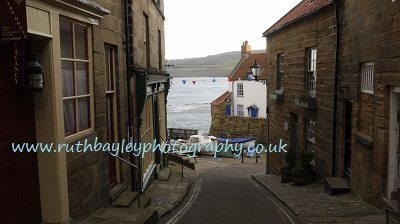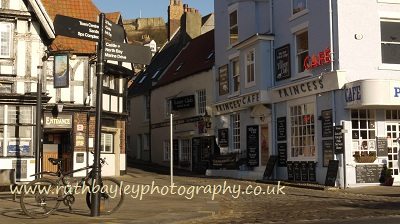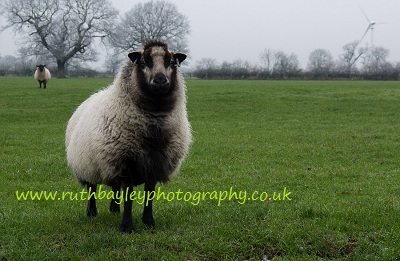As I went out to take photos the other day of frosty trees in the countryside, I was plagued by the same old thought. Must we as photographers’ remove all trace of modern day living from our photos? If you live in a suburban countryside electricity pylons and telephone cables, bringing us all our creature comforts at home that we love and need, are likely to stretch their way across the landscape.

Costal idyl with phone wires
It’s not just pylons that can intrude on a photo. So many houses now have satellite dishes adorning them; do we dismiss the property in our photo because it has this sign of modern life? The paintings and Christmas card scenes that we love, showing times of horse drawn carriages, oil lamps on the street seem to signify for us a time honoured period that conjures up warm thoughts of a simpler time. Yet artists the world over record what is happening in history, their horse drawn carriages and oil lamps are very possibly our equivalent of electricity pylons that become a point of tension in our photos.
I am no exception to the rule of trying to take photos of times gone by. As I was walking along the harbour road at Scarborough a couple of weeks ago, a bicycle leaning against a lamp post at the corner of a cobbled road leading up to the castle caught my eye. It was too good to resist. Though I needed a really tight frame around the bike as a delivery van was parked right in front of it and of course, that would spoil the whole image that I was trying to create along with the café on the opposite corner of a 1960’s era.

Time stands still
Recently I found myself in quaint moorland and coastal fishing villages. One such village, Robin Hood’s Bay, a beautiful little gem on the Yorkshire coast is made up of narrow alleyways where vehicles are unable to intrude. Merrily I found myself taking as many shots as possible, enjoying the rare opportunity where motor vehicle wasn’t able to obliterate a shot. It was possible to make it look like time had stood still and it was a wonderful chance to work without interruption of car or even any jarring signs of our new technology and infrastructure.
I imagine that there is no right answer to this conundrum; it’s whatever works for us. I regularly see exhibition photographer’s showing the more realistic side of life and that comes with oil refineries, scrapyards and a normal street full of cars, litter and telephone posts. Sometime it is impossible to remove all traces of our modern life and it’s whether, if we have a powerful foreground, we shrug our shoulders and say, that’s ok, what can we do, we are just interpreting life. Much like when I’m in Italy and I can’t get my ear in to the conversation around me. My friend and I look at each other, giggle and say, they must be speaking in dialect, and it’s not at all our lack of Italian!

Wind farms bring new architecture
*The Current Photographer website contains links to our affiliate partners. Purchasing products and services through these links helps support our efforts to bring you the quality information you love and there’s no additional cost to you.
Living in the beautiful rural county of Yorkshire it was perhaps natural for Ruth to have an affinity with the countryside and its wildlife. Creativity is Ruth’s driving force finding an outlet in television & radio she worked for many years as producer for BBC & ITV.
However a love of photography and for being surrounded by nature called her to go back to her photography training and bring pleasure and joy to people through her connection with our planet.
Staying in the moment when taking her images allows her to experience the natural magnificence unfolding before her eyes. It is this moment of mediation, of gratitude, that she evocatively conveys through her images.